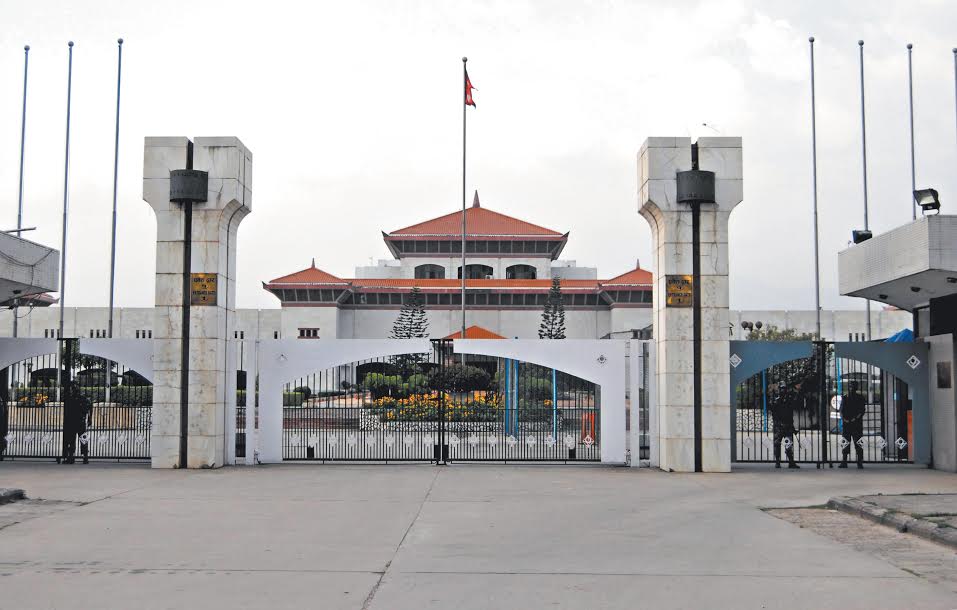Amendment bill to update emblem tabled
KATHMANDU, MAY 31
Minister of Law, Justice and Parliamentary Affairs Shiva Maya Tumbahangphe tabled the Constitution Amendment Bill (second amendment) in the House of Representatives today seeking to update Nepal’s emblem by including the revised map of Nepal after amending Schedule 3 of the constitution.
On May 20, the government had issued the new administrative and political map of the country, depicting Limpiyadhura, Lipulekh and Kalapani as Nepal’s territories although India has administrative and political control over Limpiyadhura, Lipulekh and Kalapani and has counter claim over these territories.
The bill needs to be passed by two-thirds members of the House of Representatives present on the day of voting to amend the constitution.
Although the ruling Nepal Communist Party (NCP) is short of two-thirds majority in the Parliament, the bill is likely to be passed as the main opposition Nepali Congress has decided to support it.
Senior Advocate Mithilesh Kumar Singh said the bill would have to complete the process mandated by Article 274 (4) of the constitution which meant that the government would have to seek the consent of Sudurpaschim Province to incorporate Limpiyadhura, Lipulekh and Kalapani in that province. He said a notice would have to be sent to Sudurpaschim Province within 30 days about the change in the boundary of the province.
“Our new map depicts Limpiyadhura, Lipulekh and Kalapani as the country’s territories, but the map does not show which local level these territories belong to.
The government should also inform the Election Commission about these territories.
The government has not done census and it has not earmarked budget for these areas,” Singh added.
Parliament Secretariat Secretary Gopinath Yogi told THT that a notice would be published in the Nepal Gazette and Gorkhapatra tomorrow to inform the public about the presentation of the constitution amendment bill in the HoR as per the House of Representatives Regulation. The HoR cannot move any process on the constitution amendment bill in the next seven days. After seven days, the HoR can debate the principles of the bill before giving 72 hours to lawmakers to present amendments against the provisions of the bill, if any. If amendments are registered against the bill, then there will be a deliberation on the amendments; if not, discussion will take place on the contents of the bill.
According to Yogi, the bill could be put to vote directly after lawmakers discuss it or a special committee can be formed before the bill is put to vote. Parliament Secretariat sources said chances of forming a special committee were slim, as there was only one issue — the revision of map — for the amendment.
Once the bill is passed by the HoR, it would be sent to the National Assembly, where a similar process would be followed. Yogi said the Upper House would be able to immediately conduct other proceedings as the seven-days public notice process would have been completed in the HoR.
Parliament sources said that if both the houses wanted to fast-track the passage time, they could do so by suspending House rules. Spokesperson for the Parliament Secretariat Rojnath Pandey said the House could shorten the time required to register amendments on the bill’s provisions. The HoR could pass the constitution amendment bill after three to four House meetings. “But if the House decides to hold two to three meetings in one day, then the bill could be passed within days,” Pandey said. He added that the bill would not be decided through voice voting.
Lawmakers will have to put their signatures to support or oppose the bill.
A version of this article appears in e-paper on June 1, 2020, of The Himalayan Times.






